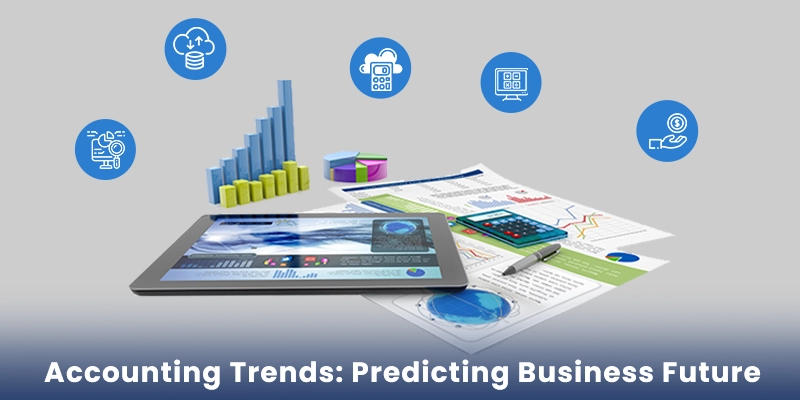
Unlock The Power Of Big Data for Businesses in 2025
Big Data, evolving as a new business resource, is helping businesses create an economy powered by innovative insights. For a long time, businesses have been investing in assets that are depleted with use and going nowhere. However, data is self-perpetuating and power of big data is immense. Big data is simply utilizing this unique behavior of data to minimize information complexity through a strategic analytics approach.
Table of Content:
- What is Big Data
- Ways to Leverage Big Data for Businesses in 2024
- Industries Adopting Big Data in 2025 and Beyond
- Case Studies on How Businesses Leveraged The Power of Big Data
- Harnessing The Power of Big Data Using AI (Artificial Intelligence)
- Final Thoughts
- FAQs
What is Big Data
Big data refers to the large amount of diverse (structured and unstructured) data that is generated from various sources, including social media, sensors, and other online platforms. Using Big Data Businesses can analyze and assess production, customer behavior and preferences as well as make decisions as per the current market demand.
It consists of three fundamental characteristics: Volume, Velocity, and Variety. The Volume of Big Data is the large amount of data that is generated every day whereas Velocity refers to the speed at which the data is generated and processed. Variety of Big Data refers to the different types of data that are generated in the form of text, images, videos, and audio.
Ways to Leverage Big Data for Businesses in 2025
1. Lead with Purpose
It is essential for leading organizations to achieve clarity in a world of ambiguity. In certain circumstances, businesses start with a less clearly defined strategic point, which might collect useful data sets but not worth the purpose. Such unmatched approaches not only extract them from the right path but also consume valuable resources.
To avoid fueling valuable resources and investing precious time into something that delivers unsuitable insights, businesses need to first acknowledge their sector and nature of data they wish to utilize. Harness innovative technologies including artificial intelligence (AI), the blockchain, big data and the Internet of Things (IoT) help businesses to strengthen their hold on the basics of data management, BI and analytics. Therefore, businesses need to accelerate their speed in today’s data-driven culture to lead with purpose – better business outcomes.
You may also see: Blockchain Technology Aiming To Improve Cloud Security And Capacity
2. New Challenges Bring New Opportunities
Once a business figured out all the possible chances of opportunities in today’s competitive data-centric environment. The next point to consider is, measuring the team’s capability of harnessing and analyzing available information.
In the same way, any organization can gather information by analyzing the behavior of consumers that will lead them to victory. The proper understanding of proxy of behavior i.e, movement tracking and brand likability help businesses to collect, analyze and harness the right information. On the source of gathered information businesses then can bring improvement in the tactics of marketing their products and services.
But, it is again a mystery for businesses to track and analyze the ‘possible data point’ to start with. Finding valuable starting points from the endless possibilities seems to be a challenging path for businesses. Let’s make the overall procedure a little easy for businesses who are afraid of “Where to begin?”.
Emphasize on these three points before seeking new challenges:
- What type of data should your team record?
- How should your team measure and analyze that data?
- How can strategic analytics approach help create more robust outcomes?
3. Begin With The Right Path
Most of the leading organizations are unable to find starting points as they are unable to interpret the right path. However, tracking the real-time differences to forecast one fixed strategy will surely help businesses to target their goals. The simple ladder to reckon new opportunities and opportunities without lagging behind in any way as mentioned above:
I. Hire a team of experts
For businesses to knock out challenges and seek opportunities, it is essential to create a team consists of behavioral management experts, big data experts, and analytics experts. To leap ahead of the competition, every team should these three types of individuals:
- Data jockeys, individuals who can prepare and manipulate big data sets for analysis.
- Data scientists, individuals who are capable of understanding modern analytic methods and can create data models accordingly.
- Business consultants, individuals who can utilize an appropriate strategic approach to build connections between your company’s questions and goals.
Also find: Big Data Vs Data Science Vs Data Analytics
II. Strategize a project playbook
Your team should follow an operational strategy irrespective of language or platform and should be able to:
- Identify the end goal.
- Capture and track the right data.
- Follow the right analytic methods.
- Ensure clear directives and recommendations.
Industries Adopting Big Data in 2024 and Beyond
There are many business sectors that are adopting Big Data. Here are some of them:
1. Healthcare
Big data is evolving rapidly and has immensely improved healthcare by providing valuable insights into patient care. Moreover, it has helped to understand performance, improve clinical quality, advance research and manage risk and reporting.
As per fact.Mr analysis, Global big data analytics in the healthcare market is expected to grow at a 19.2% CAGR, reaching a value of US$ 194.7 billion by the end of 2032.
2. Retail
Big data insights are used by retailers to improve customer experience and drive sales. Using big data, retailers analyze customer behavior, preferences, and trends, which helps in creating personalized marketing campaigns and product recommendations. Retailers can also use big data to optimize their supply chain, pricing analysis, demand forecasting, market basket analysis and improve efficiency and reduce waste.
3. Finance
Many financial institutions have adopted big data solutions to improve their operations and have immensely succeeded in utilizing their full potential. The Finance Industry has been using Big data to get real-time stock market insights, understand customer behavior or preferences, analyze financial performance, predict and mitigate operational risks and frauds.
According to IBM research, “71% of banking and financial institutions report that the use of big data analytics is creating a competitive advantage for their firms.”
You may also like: Why AI and Cloud Accounting is A Way to Go for in 2024
Case Studies on How Businesses Leveraged The Power of Big Data
Big Data is accelerating the revenue growth of almost every sector by reducing its IT budget pressures and offering accurate data sets. Here are a few examples that show the actual benefits of leveraging Big Data & analytics into business.
- Most leading organizations, including Accenture, believe that companies that do not embrace advanced analytics and strategic approaches are more likely to regret their competitive position.
- NewVantage Venture Partners Survey states that 84% of enterprises prioritize big data initiatives and embrace advanced analytic tactics to experience greater accuracy and accelerate decision-making rate within the business environment.
To fabricate entirely new business models and acquire sustainable marketplace advantages, businesses are leveraging big data using AI which is adequate to deal with such voluminous and complex data sets. In recent years, AI has also witnessed huge success in mainstream consumer environments. But, again, AI with finite data will only offer rudimentary analytics. The fact is that both Big data and AI are a counterpart of each other.
Harnessing The Power of Big Data Using AI (Artificial Intelligence)
Machine learning (an application of AI) dates back to the 1950s whereas Big data began to set in early 2013. Undoubtedly, leading organizations are building cross-sector relationships to attain a platform that allows them to gather quality data. Modern-day consumers are way more active on social media platforms allowing businesses to derive actionable insights out of the data sets provided online.
Here is how big data and AI gather these insights:
1. Data Collection and Storage
Big data encompasses in gathering and storing massive amounts of structured and unstructured information. These data are archived in storage systems that are dispersed or hosted in the cloud-based system that can manage the volume, velocity, and variety of these data.
2. Data Preprocessing
Before analysing the data, the collected data needs to be processed and prepared. This involves sorting the data by removing errors, duplicates and filling in missing values. Moreover, data is processed in such a manner that it ensures the data quality is suitable for the analysis.
3. Data Analysis
After data has been preprocessed, AI Algorithms are used for analysing the data. To acccomplish this, it is necessary to analyze the data for patterns, correlations, and trends using statistical and machine learning. Along with this, Human analyst may not be able to handle the complex calaculation hence AI algorithms performs analysis.
4. Machine Learning
In order to extract useful insights from Big Data, machine learning are essential. Machine Learning helps in predicting and making decision based on data patterns and correlation instead of explicit programming. For big data analytics, machine learning approaches like supervised learning, unsupervised learning and reinforcement learning are used.
- Supervised Learning: In supervised learning, the algorithm is trained using labeled data, where the desired outcome or target variable is known. As a result, the system can recognise patterns and make prediction using new and unseen data.
- Unsupervised Learning: Unsupervised learning algorithms are used when the data does not contain predefined labels or target variables. It helps in grouping the similar data into different segments.
- Reinforcement Learning: Reinforcement Learning algorithm is employed to make sequential decisions and optimize its actions based on feedback. As well as optimize resource allocation and personalize recommendation.
5. Insights and Decision-Making
The analysis of big data using AI (Artificial Intelligence) can generate valuable insights that can help in better decision-making, imrpove efficiency and introduce innovation. These useful insights include identifying market trends, customer preferences, fraud detection, risk assessment, and more.
AI under the aegis of big data forecasts a more pragmatic perspective that helps businesses to understand specific behavior and perceived preferences of each user. The multinational technology company, Google, uses big data to understand the preferences and behavior of millions of people and uses Artificial Intelligence to provide the most relevant search results. Big data is changing the way businesses search for starting points by enhancing their ability to gather and contextualize relevant information that leads to intelligent strategic decision-making.
Final Thought
Smart deployment of scalable big data technologies helps businesses to relieve IT budget pressures and also minimize information complexity. The whole idea of operationalizing big data analytics may seem difficult, but effective and efficient analysis of all provided information will reap significant benefits.
As we move beyond the information age, the question of what comes next is on everyone’s minds. However, with the power of big data at our fingertips, the possibilities for discovery, innovation, and progress are limitless.
FAQs
How can big data provide your business a competitive advantage in its operations?
Big data can provide businesses with a competitive advantage by helping them:
- Make better decisions
- Increase efficiency
- Enhance the customer experience
- Gain competitive intelligence
- Manage risks
How big data is unlocking mysteries?
Big data is unlocking mysteries by providing insights and patterns that were previously unknown or hard to identify. It provide aid in the form by:
- Analyzing large datasets
- Identifying trends
- Predicting outcomes
- Developing new solutions to complex problems
What are the challenges of big data?
Big data holds tremendous potential, but it also encounters several significant challenges that are necessary to overcome. Such challenges include:
- Data Security: Data privacy and security become major issues when more data is collected for analysis. It is crucial to ensure that data is gathered and handled safely and ethically, concerning people’s security and privacy.
- Data Reliable: Only good-quality big data is worthwhile. For the researcher to derive useful insights, it is crucial to ensure the data are accurate and reliable.
- Data Integration: As big data are generated from various sources, integrating and evaluating it is often challenging. In order to gain a complete picture, businesses need to come up with strategies for integrating and assessing data from various sources.







